I’ve been kitesurfing since 2009. Back then the sport had already established itself and innovation had started to plateau. The wild years of experimenting with shapes, size and materials had passed and it had become a very safe and fairly standardised sport to practise.
Now, ten years later, the equipment has improved even more, new styles and genres have emerged, kitesurf media has grown both in quality and quantity and while some brands have disappeared, many new have arrived on the market.
Despite all this, kitesurfing is still a niche sport, and the general awareness is poor. So, for everyone new to the sport and curious to find out more, here are some commonly asked questions about kitesurfing.
What is it like to kitesurf?
Everyone has their own perception of cruising on the water powered by a kite. Depending on the style you practise it can be anything from relaxing and meditative to invigourating and exciting.
It’s fun, and for many it’s addictive. It’s like harnessing something that feels alive. Your kite comes alive, and you control it. Being so close to the elements and in control results in a sense of freedom most of us can’t get enough of.
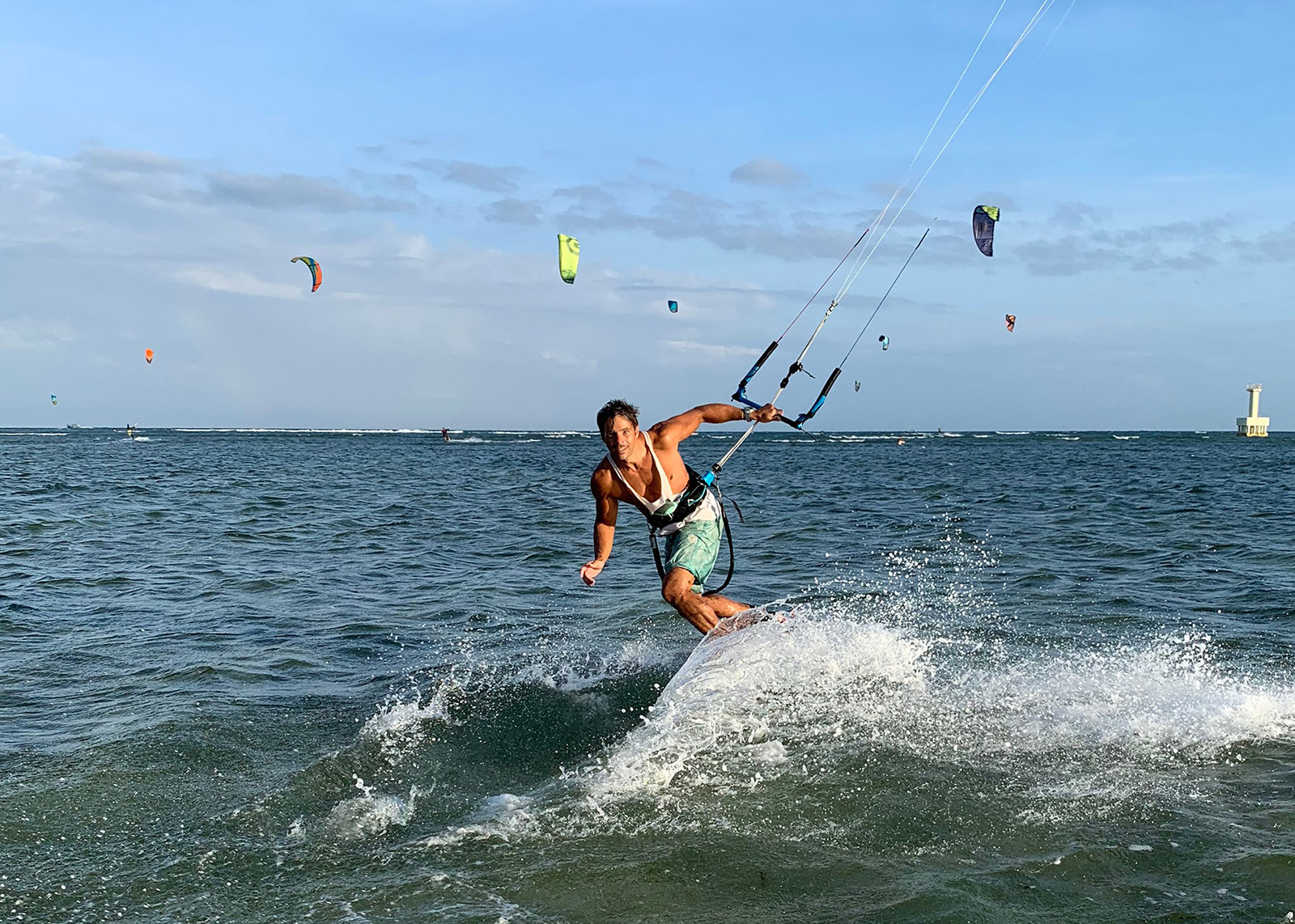
Is kite surfing dangerous?
Kitesurfing in calm and predictable conditions is not very challenging, and can be considered safe. It’s the unpredictability of the weather, coupled with poor judgement that can turn it into a lethal activity with disastrous outcome. So yes, it’s dangerous if you play outside your comfort zone. You can make it a lot safer by applying some general caution:
- Don’t attempt kitesurfing without having lessons first. Safety is a big part of the introductory course.
- Don’t ride new equipment without checking the safety system first.
- Don’t ride with a board leash. The leash works as a bungee and your board could hit you in the head (learn how to body drag instead).
- Practise self-rescue in calm conditions so you know what to do if you have to do it for real.
- Learn the international rules to avoid collision on the water
- Most accidents happen on land. Be extra careful when launching and landing your kite.
- Check the wind and weather forecast and don’t go out in conditions you can’t handle.
- Never go out alone
- Don’t jeopardise your life to save your kite. It’s better to detach yourself from an uncontrollable kite than trying to regain control of it.
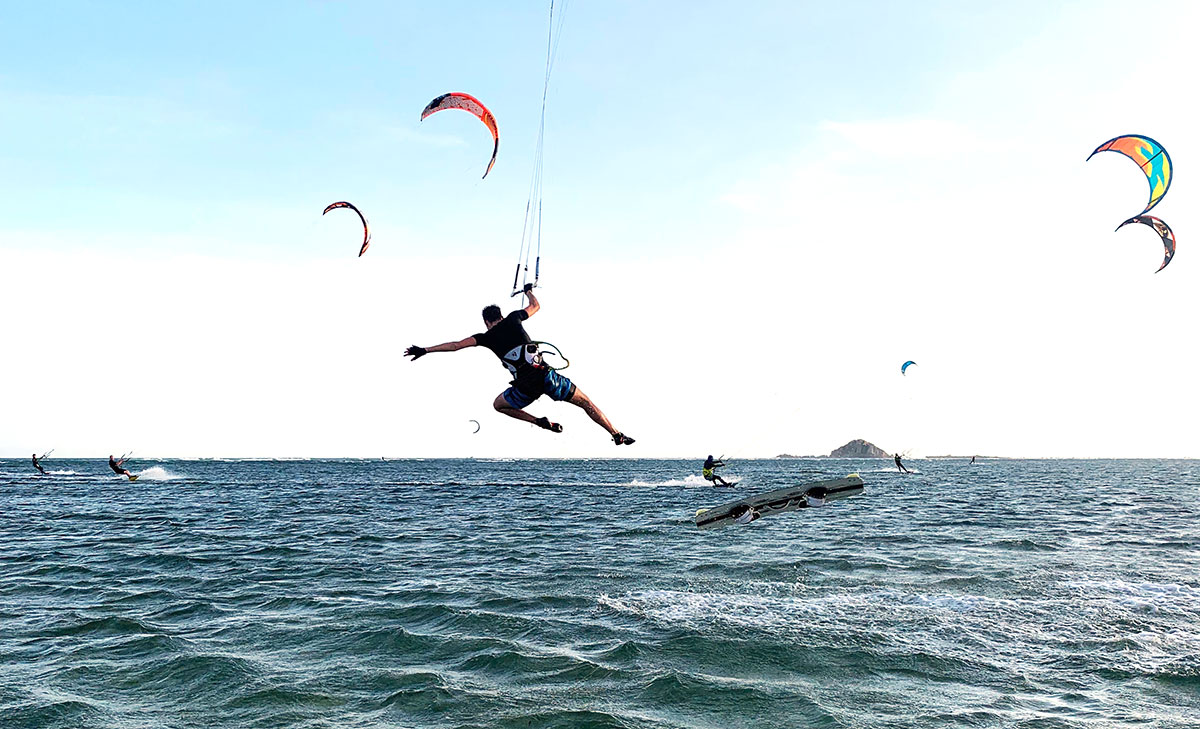
Is kitesurfing easy to learn?
Yes, with a good instructor and a few days with consistent wind you’ll be up and riding. It’s definitely easier than surfing or windsurfing.
It helps if you have fairly strong wind (around 20 knots is ideal. It’s strong but not scary strong) and shallow water where you can stand up and relaunch your kite easily, because you will crash a lot 🙂 It also helps if you have experience with wake boarding, power kiting or even sailing to understand the wind.
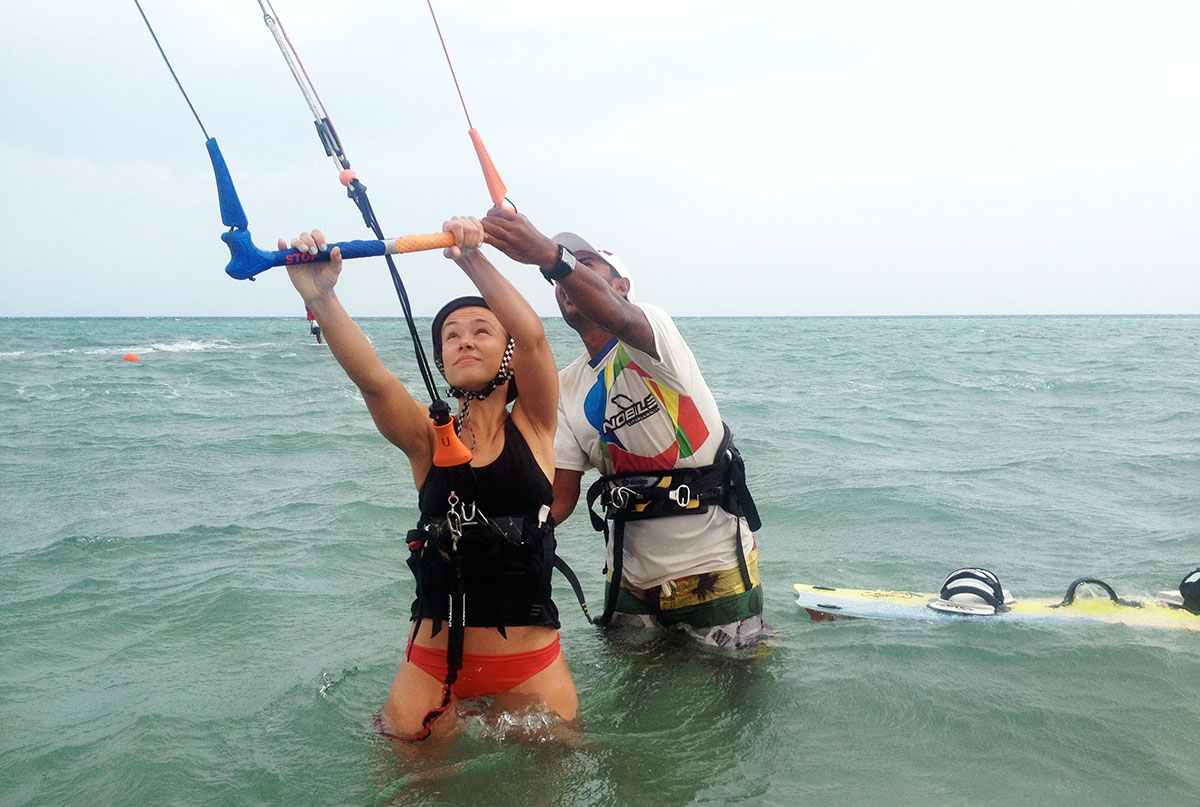
How long does it take to learn kite surfing?
Most kitesurfing courses are three days, or eight hours long. That’s because in that time the instructor can teach you all you need to know to be able to get up on the board and be self-sufficient.
After your course you can rent or buy equipment and practise on your own until you reach the next milestone; staying upwind. Most people find this to be extremely liberating because now they can come back to where they started without having to walk up the beach.
After that, the sky is the limit. You can practise going upwind, turning, riding toe-side, making your first jumps…
What do I need for kitesurfing?
Kiteboarding is a gear-heavy sport. We’ll be forever envious of the surfers who only need to grab their board and paddle out to the wave. On the other hand, while they’re sitting there waiting for waves 85% of the time, we’re riding non-stop.
So what do you need? Well, let’s start with the obvious; you need wind and water. You’ll also need:
- A kite
- A control bar + lines to steer the kite
- A harness to hook your control bar into
- A board
You might also carry a pump with you to inflate your kite, and a leash that connects your bar to your harness.
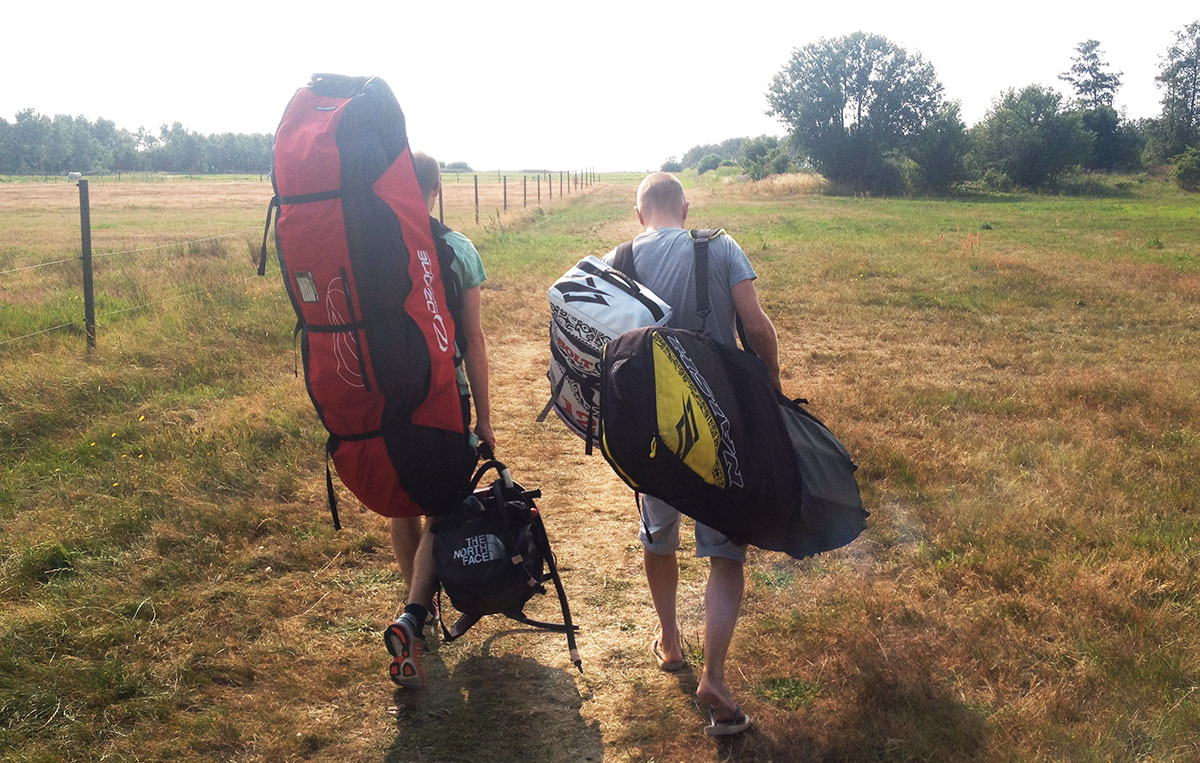
How much does kitesurfing cost?
It ain’t cheap my friends. Kitesurfing brands know how to charge for their equipment. It’s a niche sport and the brands can’t ride on the economy of scale. Also lessons normally cost around 100 USD per day, and renting around 60 USD per day.
Having said that, you can often find good deals on last season’s gear, or buy second hand gear for a lot less. Look after your gear and it will last for many years to come.
Price example, new gear:
- 10m kite with bar: 1500 USD
- Board: 500 USD
- Harness: 200 USD
Price example, two year old, used gear:
- 10m kite with bar: 750 USD
- Board: 250 USD
- Harness: 100 USD
How old do you have to be to kitesurf?
There is no age limits to kitesurfing. There are kids out there as young as five years old. Children are quick learners, so as long as they know how to swim you can start teaching them the basics.
Same goes for old age. Don’t let age prevent you from staying young! Kitesurfing with a seat harness and well tuned bar settings is not heavy on the joints or muscles, but offers great exercise and happy moments.
How long do kiteboarding kites last?
The material of the kites is constantly getting better, but at the same time they are exposed to UV light, salt water, sand and strong wind.
A school kite, used and abused almost every day might be done after one season, whereas a looked after kite, mainly ridden in the weekends can last for years and years to come.
You might have to fix your first bladder leak or canopy rip after a year or two, but if small issues are fixed as soon as discovered your kite should last at least five years.

How fast can a kiteboard go?
The daredevils riding the speed channels in Dakhla and South France have reached speeds over 50 knots.
What is freestyle kiteboarding?
Freestyle is a type of trick-oriented riding mainly focusing on unhooked, wakeboard inspired tricks. In kiteboarding, kites and boards are often promoted as free-ride, freestyle or wake-style oriented.
Free-ride refers to cruising, boosting high jumps and riding varied conditions from flat, chop and waves. Freestyle is the more acrobatic cousin to free-ride, incorporating so called new-school tricks while unhooking and keeping your kite low. Wake-style is a direct adoption of cable and boat powered wake boarding, keeping the kite low and often using sliders, kickers and other obstacles to perform a trick.
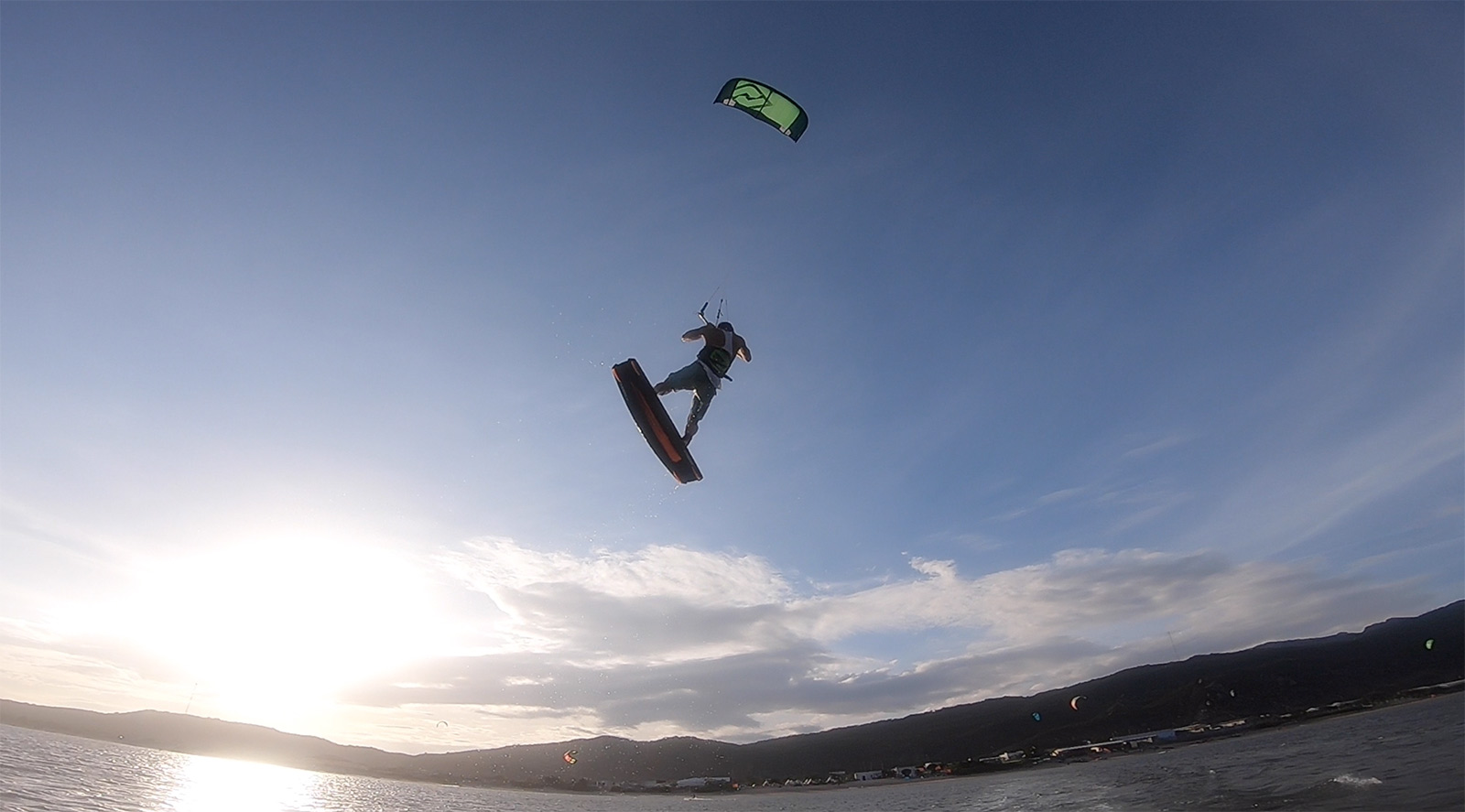
Is kiteboarding an Olympic sport?
It’s getting there. Kiteboarding is now a sport in the Youth Olympics, where they are competing in course racing. It’s set to enter the grown-up arena in 2024.
What is the difference between kitesurfing and kiteboarding?
Nothing, for most people. Some purists may say that kitesurfing is when you surf a wave, and kiteboarding is when you ride on flat water. But it doesn’t matter. Kitesurfing is generally a more common term, used to describe any activity on water with a kite and board.
What is the difference between kitesurfing and windsurfing?
Windsurfing came first, and naturally distinguished itself from normal surfing by adding the wind-element to the name. With that logic, kitesurfing is also windsurfing. Or if we stick with kitesurfing, windsurfing should be called sailsurfing. That will never happen.
Windsurfing is a board sport using a mast and sail to harness the wind. Kitesurfing is a board sport using a kite to harness the wind.
But we could also define it as; windsurfing is a sport for old farts and kitesurfing is a sport for cool cats. But that would be a generalisation 😉
Can you use a wakeboard to kiteboard?
Oh yes you can. You’ll need to be powered up a fair bit to compensate for the big rocker on your wakeboard though. Kiteboards are designed to be faster than wakeboards. They plane sooner and travels better upwind.
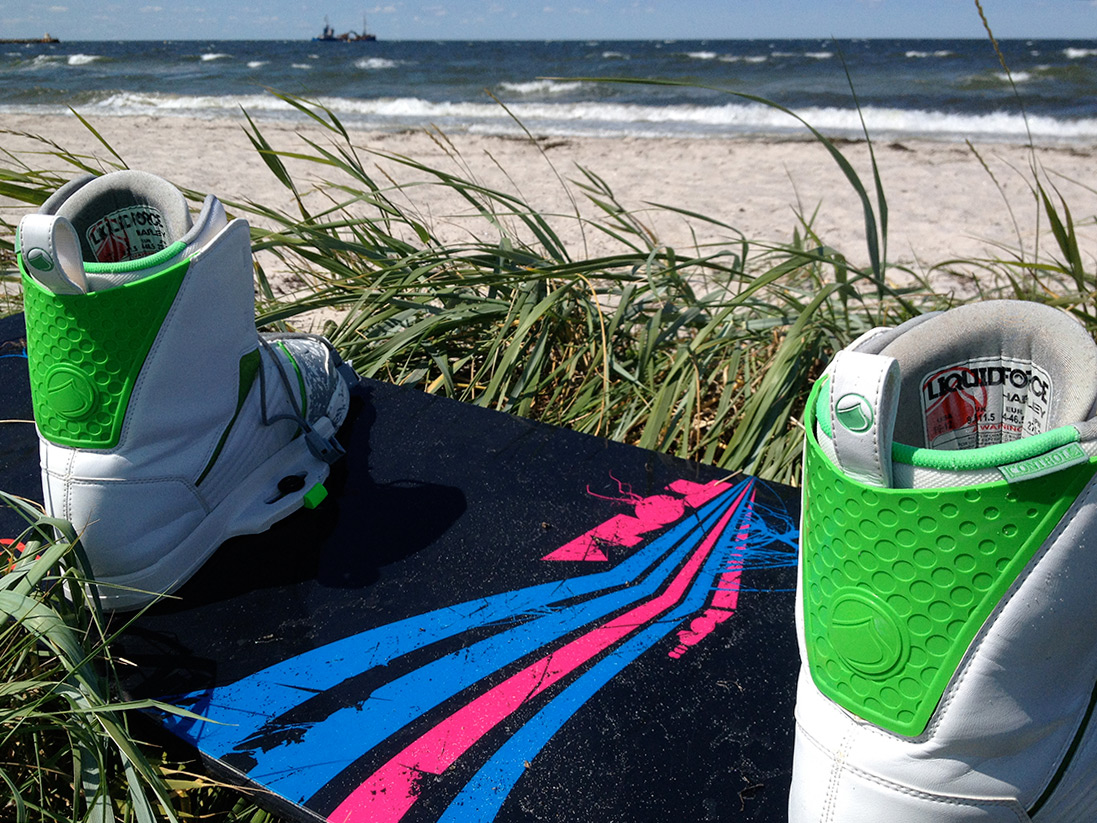
Who invented kitesurfing? / When did kitesurfing begin? / Where do kitesurfing originate from?
Although there were many attempts to use a kite to travel on the water back in the 80’s and maybe even 70’s, most people credit the French Legaignoux brothers as the inventors of modern day kitesurfing.
They invented and commercialised the first inflatable kite in 1997, which soon thereafter made it to mass production and was brought to the main stream under the Wipika brand.
Maui has always been in the forefront of kiteboarding thanks to it’s habitants being obsessed with watersports in general, so a lot of the early pioneering of the sport came from there by legends like Laird Hamilton, Robby Naish, Pete Cabrinha and Lou Wainman.
The movie UPWIND, available on YouTube explains it nicely.
Got a question that is not on this page? Post it in the comments below and I’ll do my best to answer it.
Hej!
Var finns bästa orter i världen eller (europa) nybörjarförhållanden kitesurfing (plattvatten och så man bottnar) säkra vindförhållanden i sista veckorna i augusti? Där man inte behöver vara orolig för sjukdomar.
Hej Catarina.
For den tiden pa aret skulle jag titta pa Marsala i Sicilien. En enorm plattvattenslagun och stadig men inte sa stark vind i princip varje dag. Perfekt for nybörjare. Aven Sotaventos lagun i södra Fuerteventura kommer funka bra men kan vara lite byig beroende pa vindriktning. Stark vind dar dagligen. Moroccos Dakhla ar en annan klassiker. Om ni vill aka längre finns det plattvattenslaguner och stark vind i Mauritius och Sri Lanka sa har ars. Aven Kenya och Zanzibar lär vara bra.
Hi,
Please… As a Dane, please let me translate this site for you. The language used has just butchered the native tung… (https://globalkitespots.com/da/kitesurfing-faq-beginners-guide/). Allow me to fix this swiftly and free of charge – since the guide actually is that good!! 😉
Curiosità, è possibile sapere se il principiante inizialmente viene ancorato all’istruttore per imparare la tecnica. Grazie.
Sei connesso solo tramite walkie talkie, nessun guinzaglio fisico. Ma non preoccuparti, non volerai via 🙂